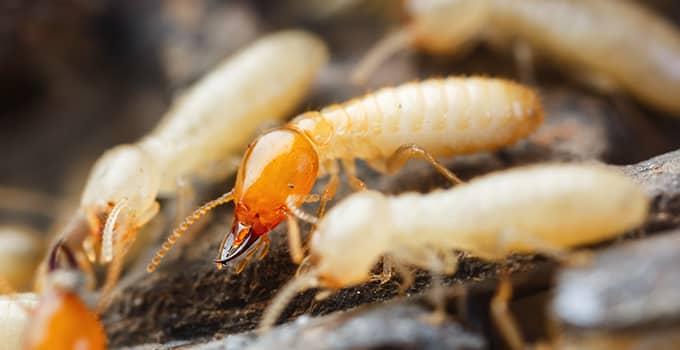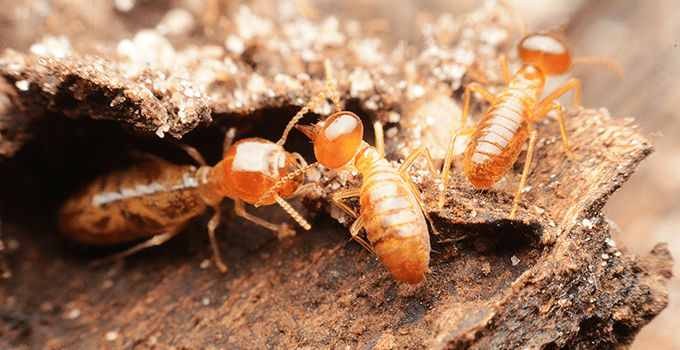Signs Of Termites
Termites may not be able to destroy your Kansas home or business as fast as a fire or a tornado, but they can certainly hurt your equity over time if your structure isn’t protected. These insects cause damage that is hard to see and difficult to repair. So, if you don’t have ongoing termite protection, it is vital to recognize the signs of a termite infestation.
Termite Swarmers
It may sound silly but, seeing termites is the biggest sign that you have termites. If you’re noticing winged insects flying around a light, fluttering around near the ground, or crawling on your exterior walls, it is not likely that they came from somewhere off your property. Termite swarms don’t last long, and they don’t travel far. Usually, when swarmers are seen crawling on the walls of a structure, it is because there is already a mature nest inside–or nearby.
Mud Tubes
In Kansas, the most destructive termites we have are subterranean termites. These termites come up from the ground to feed. When they do, they may create mud tubes on your foundation walls to go from the soil to the wood of your structure. These mud tubes are likely to be in shaded areas, or in crawl spaces. You’ll need to look under external structures, such as decks, porches, patios, and stairways, as well as behind bushes and shrubs.
Hollow Wood
When subterranean termites chew tunnels in wood it causes the wood to become brittle and hollow. Tapping on wood with something hard can help you to determine if there are termites living and feeding inside. Start in basement areas and wood on the underside of your structure, such as support beam in crawl spaces.
Damaged Wood That Touches The Soil
While subterranean termites can build mud tubes to get to wood, they prefer wood that touches the soil. If there is a portion of your structure, garage, shed, or outbuilding that touches the soil you may see when subterranean termites are feeding on it, especially in spots that have shade or some kind of protection from the drying effects of the wind. Subterranean termites prefer to stay inside wood, but in moist shaded areas, such as behind a woodpile, stack construction materials, a line of bushes, or some other obstruction, they may feed out in the open air.
Stumps, Wood Piles, And Other Dead Wood
If you have any wood on your property that is untreated or dying, it may help you to determine if there is a termite threat. Before termites attack the wood of your structure, they are likely to go for an old stump, a tree that is dead or dying, or a pile of stacked wood. In nature, termites have a role to play. They break down dead wood and turn it into fertile soil. On your property, they will do the same. This will be most noticeable with wood piles because there are spaces in between the wood pieces that are shaded and moist. This allows termite workers to come out into the open.
Under Mulch
It is possible to find termite activity under mulch. If you have mulch near your structure, dig up a portion to see if workers or swarmers are underneath. Workers will be pale yellow insects with six legs and two antennae. Swarmers will be black insects with long white wings stacked on their backs. If you have termites, there will be lots and lots of them.
Structural Changes
The worst sign you can have is structural changes. If termites are allowed to feed for months or years, it can lead to doors and windows that stick, walls that bulge, ceilings that sag, and floors that sink down. Often, termite damage is mistaken for water damage because it is similar in appearance.
Clicking Sounds
When a termite worker is tunneling and feeding, it will click its head on tunnel walls to communicate with other workers. If you have hundreds inside a wall, you should be able to hear this clicking. This is a clear sign that you have termites.
Don’t wait to see (or hear) signs of termites. Call Schendel today and get ongoing, always active, termite protection for your Kansas home or business.








